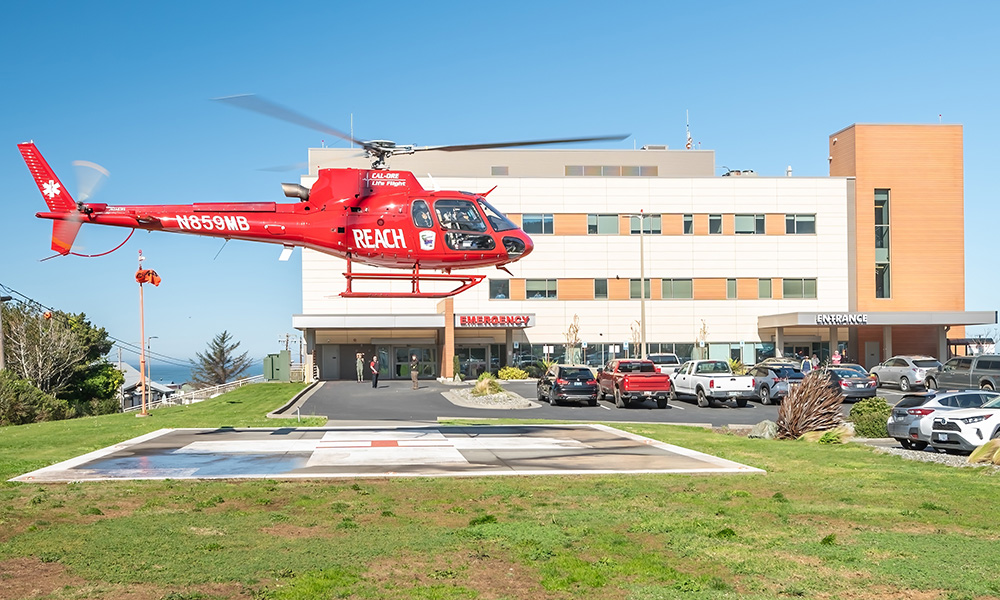A new JAMA Network Open study led by Erin Duffy, who’s studied surprise billing for nearly a decade, finds that more robust public data on air ambulance disputes are needed to fully assess the impacts of the No Surprises Act (NSA). The study yielded other important insights:
- Air ambulance organizations in 2023 won 86% of cases settled by the independent dispute resolution (IDR) process established by the NSA.
- Private equity-backed air ambulance organizations were involved in 61% of disputes and received higher IDR amounts than non-PE providers.
- IDR amounts in 2023 were 2.95 times the qualifying payment amount and 7.82 times Medicare reimbursement. The amounts are higher than what insurers would typically pay for in-network air ambulance services before the NSA but roughly consistent with pre-NSA provider charges.
- Due to limitations in data released by CMS, it was only possible to assess financial outcomes in less than half of air ambulance disputes—a far lower rate than for other services involved in IDR cases. Researchers suggest several ways that CMS could make more complete data on air ambulances available.
Key Points
Question What were the outcomes of air ambulance cases processed by the No Surprises Act’s independent dispute resolution entities in 2023?
Findings In this cross-sectional study of 5678 cases, arbiters decided in favor of air ambulance organizations in 86.4% of the disputes against insurers, and 61.3% of cases involved a private equity–backed organization. Financial measures were reported for only 48.4% cases; among them, the mean qualifying payment amount (a measure of the insurer’s median contracted rate) and winning offers were $15 561 and $32 463, respectively.
Meaning These findings suggest that more complete public data on air ambulance independent dispute resolution cases is needed to monitor the impacts of the No Surprises Act.
Abstract
Importance The No Surprises Act (NSA) banned surprise patient balance bills and established a binding arbitration system to resolve payment disputes between insurers and health care providers (eg, clinicians, hospitals, air ambulance organizations) for certain services, including air ambulance transportation. Understanding use and results of this new independent dispute resolution (IDR) system can inform ongoing adjustments to its implementation.
Objective To describe the involved parties and outcomes of air ambulance NSA IDR cases.
Design, Setting, and Participants This cross-sectional study assessed cases arbitrated through NSA IDR in 2023 as reported by the Centers for Medicare & Medicaid Services. Participants included air ambulance organizations and commercial insurers. Data were analyzed between August 1 and September 1, 2024.
Exposures Fixed-wing and rotary transport disputes arbitrated under the NSA IDR system.
Main Outcomes and Measures The activation components of fixed-wing and rotary transport disputes were evaluated with data from 2 distinct public files: (1) disclosed parties and outcomes relative to qualifying payment amounts (QPAs), the insurers’ median of contracted rates for similar services in the region among similar health plans; and (2) monetary measures but without parties. The first file describes the insurers and organizations involved, including their ownership status, as well as the prevailing party and the offers and decisions relative to QPA. The second file describes QPAs, offers, and decisions monetarily and these are compared with Medicare’s urban allowed amount.
Results There were 5678 IDR cases in 2023, comprising disputes for 4935 rotary and 743 fixed-wing transports. Air ambulance organizations offered a mean (SD) of 3.18 (4.20) times QPA, and insurers offered 1.39 (3.89) times QPA. Organizations won 4905 cases (86.4%) at a mean (SD) of 2.95 (4.12) times the QPA. A total of 3478 cases (61.3%) involved organizations owned by private equity investors, and these cases had higher prevailing offers relative to the QPA. Due to data suppression, analysis of financial measures was possible for 2897 of 5983 activation cases (48.4%), among which the mean (SD) QPA offer was $15 561.08 ($9730.97) (3.74 [2.31] times Medicare), and the winning offer was $32 463.70 ($9987.17) (7.82 [2.39] times Medicare).
Conclusions and Relevance In this cross-sectional study of air ambulance payment disputes, air ambulance organizations won most cases, requiring insurers to pay more in these cases. Notably, the NSA does not require changes to patient cost-sharing based on IDR outcomes. Assessment of the financial metrics and outcomes of air ambulance cases was limited due to missing and masked information. Continued monitoring of air ambulance IDR cases is needed to assess the impacts of the NSA.
The full study can be viewed at JAMA Network Open.
Duffy, P., MPH Erin L. (2025). No surprises act independent dispute resolution outcomes for air ambulances. JAMA Network Open, 8(3), e2462404–e2462404. https://doi.org/10.1001/jamanetworkopen.2024.62404




